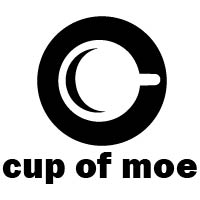We may earn money or products from the companies mentioned in this post.
Director and screenwriter John Krasinski, arguably best known as Jim Halpert from NBC hit series “The Office” directs, pens the screenplay for, and stars in “A Quiet Place.” The 2018 “A Quiet Place” hails from the elevated horror subgenre, utilizing mostly suspense for its scares. Similar to 2017 thriller “It Comes at Night,” the gripping “A Quiet Place” may indeed be hushed, but its plot is far from muted.
In 2020, the majority of Earth’s population has been destroyed by creatures that, though blind, benefit from hypersensitive hearing. Additionally, these beings feature near impenetrable armored exoskeletons. Armed with powerful auditory capabilities, these monsters relentlessly attack anything which makes noise. A family of survivors, wife Evelyn Abbott (Emily Blunt), husband Lee (Krasinski), sons Marcus (Noah Jupe) and Beau (Cade Woodward), and daughter Regan (Millicent Simmonds), live on a remote farm. Using American Sign Language to communicate, the Abbott’s must nonetheless remain cautious so as to not make any sounds, lest they attract the attention of the aforementioned creatures. However, a tragedy befalls the Abbotts on a routine trip to the derelict nearby town.
Flash forward one year, and the Abbott family continues to adapt to the menacing, post-apocalyptic landscape in which they live. Or, rather, survive. Eschewing traditional narrative structure, “A Quiet Place” plops the viewer straight into the story with little backstory. A brief glimpse at scattered newspaper clippings reveal headlines about the creatures, but no revelation as to their origin. With its extreme minimalism, “A Quiet Place” mimics 1979 sci-fi classic “Alien.” In the Ridley Scott masterpiece, the set up is essentially the alien and the crew, with the viewer thrust into the movie mid-journey. Sans backstory, “A Quiet Place” marvelously shows rather than telling, and much is easily gleaned using context clues. While the origin of the monsters isn’t specifically stated, it’s inferred through subtle hints.
However, what truly sets “A Quiet Place” apart is its extreme silence. Sparse audible dialogue punctuates the eerie silence, with most of the film signed or whispered, with subtitles. Even the score is virtually unnoticeable when it’s present. As such, the film places an onus on the camerawork which is nothing short of magnificent. Each scene is packed with details, from a derelict drugstore to the rundown Abbott family homestead with its grain silo and barely-functioning pickup truck.
Moreover, through incorporating scant speech, “A Quiet Place” benefits from a lens placed on actions. Like “It Comes At Night,” Krasinski’s film analyzes family and humanism. “Who are we if we can’t protect our children?” Evelyn poses to her husband. The choices of the parents and children throughout the movie exhibits a strong survivalist element which overshadows the horror elements. It’s packed with nuance, and the necessary familial preservation inherent in “A Quiet Place” is where the ample tension mainly derives from. A taut, nerve-wracking slow burn, “A Quiet Place” silently dismantles genre tropes for a superb elevated horror tour de force.
This post may contain affiliate links. We are a participant in affiliate programs such as the Amazon Services LLC Associates Program, an affiliate advertising program designed to provide a means for us to earn fees by linking to Amazon.com and affiliated sites. However, all products are thoroughly tested and reviews are honest and unbiased.

